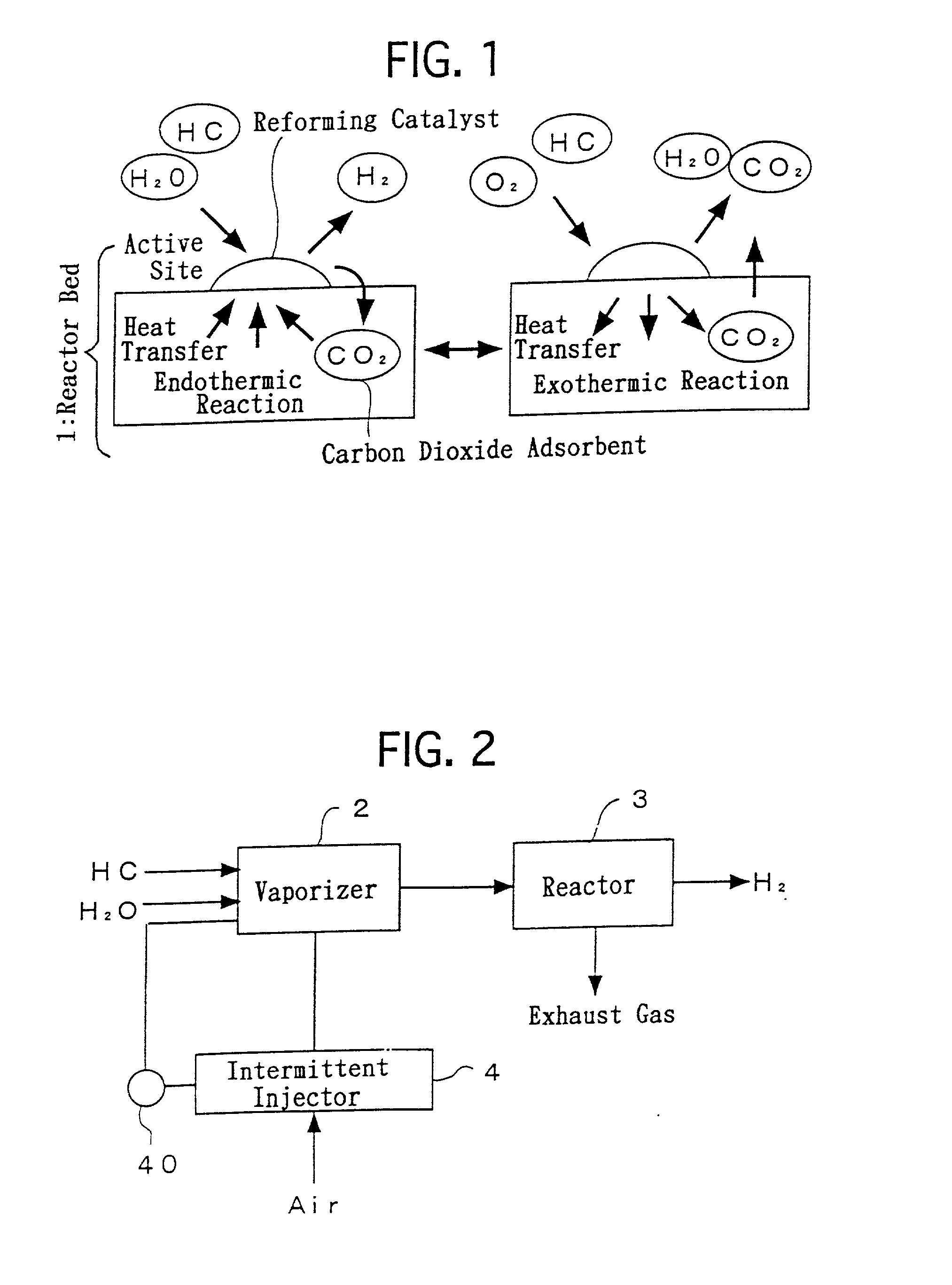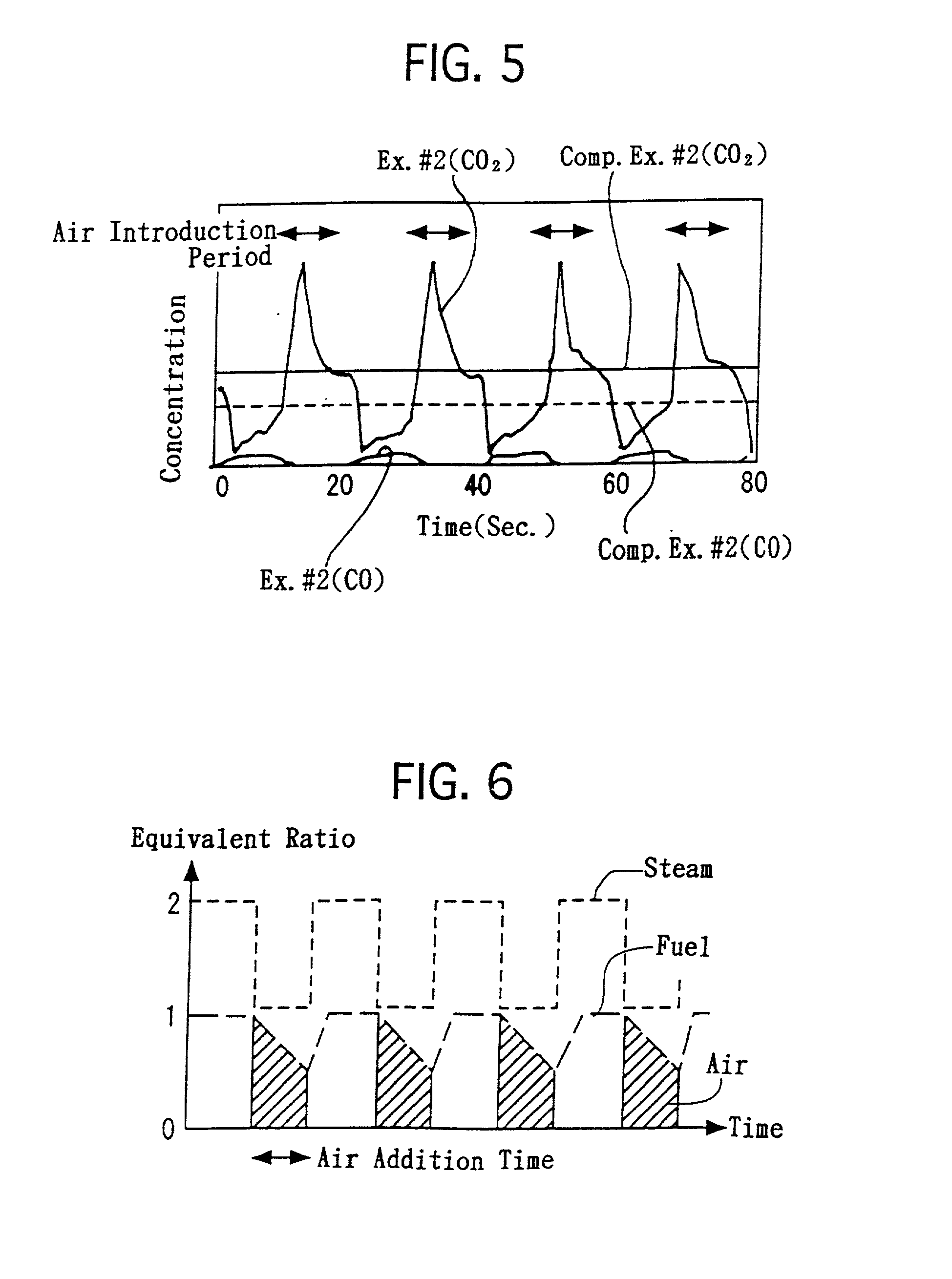Process for generating hydrogen and apparatus for generating hydrogen
a hydrogen and hydrogen technology, applied in the direction of process and machine control, liquid-gas reaction process, chemical/physical/physico-chemical stationary reactor, etc., can solve the problems of large energy loss, slow co-shift reaction, and decrease in reaction ra
- Summary
- Abstract
- Description
- Claims
- Application Information
AI Technical Summary
Problems solved by technology
Method used
Image
Examples
example no.2
EXAMPLE NO. 2
[0084] The honeycomb-shaped substrate, which was provided with the reactor bed, was disposed in the reactor 3. As illustrate in FIG. 4, the following operations were repeated at 350.degree. C. alternately. Specifically, propylene and steam were supplied for 10 seconds under the condition that the molar H.sub.2O / C ratio was controlled at 2.0. Thereafter, in addition to the propylene and steam, air was supplied for 10 seconds in an equivalent amount for completely combusting the propylene. At the outlet of the reactor 3, the CO concentrations and CO.sub.2 concentrations in the outlet gas were measured continuously. FIG. 5 illustrates the results.
example no.3
EXAMPLE NO. 3
[0087] In the above-described hydrogen generation process of Example No. 2, the supplying amounts of the propylene and steam were constant. However, when carrying out the heating step, it is not necessary to supply the steam. Moreover, in the heating step, the propylene can be supplied sufficiently in such an amount that only a heat quantity, which enables CaCO.sub.3 to decompose, is provided. Accordingly, it is possible to reduce the propylene supply amount less in the heating step than that in contacting step.
[0088] Hence, in Example No. 3, the steam and fuel were supplied as illustrated in FIG. 6. Specifically, the steam supply amount was reduced by half when the air was supplied. The fuel supply amount was reduced gradually as the time periods of the air supply elapsed, and was reduced by half at 10 minutes after the air supply started.
[0089] Therefore, in accordance with the hydrogen generation process of Example No. 3, it was possible to reduce the usage amounts o...
PUM
| Property | Measurement | Unit |
|---|---|---|
| temperature | aaaaa | aaaaa |
| temperature | aaaaa | aaaaa |
| temperature | aaaaa | aaaaa |
Abstract
Description
Claims
Application Information
 Login to View More
Login to View More - R&D
- Intellectual Property
- Life Sciences
- Materials
- Tech Scout
- Unparalleled Data Quality
- Higher Quality Content
- 60% Fewer Hallucinations
Browse by: Latest US Patents, China's latest patents, Technical Efficacy Thesaurus, Application Domain, Technology Topic, Popular Technical Reports.
© 2025 PatSnap. All rights reserved.Legal|Privacy policy|Modern Slavery Act Transparency Statement|Sitemap|About US| Contact US: help@patsnap.com



